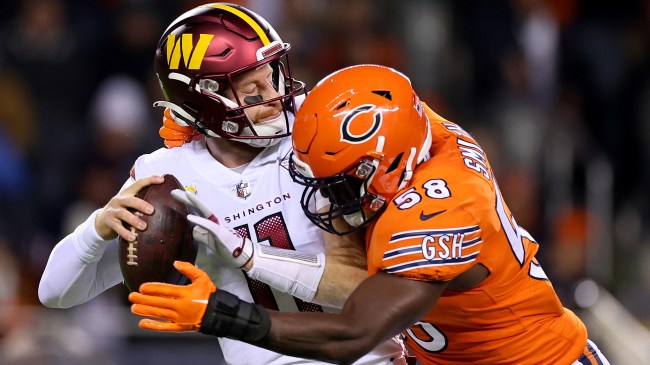
Getty Image
The NFL spent decades attempting to downplay the long-term ramifications of the concussions its players succumb to on a disturbingly regular basis, and while plenty of experts attempted to sound the alarm, you didn’t need to be a genius to realize that people in that particular line of work were subjecting themselves to some serious trauma.
Earlier this year, we were treated to the latest in a long line of studies documenting the adverse effects of chronic traumatic encephalopathy (which you probably know better as “CTE”), which showed it was detected in 92% of football players who’d had their brains examined by researchers at Boston University.
While the NFL and NCAA have taken some steps to address an issue that’s become impossible to ignore, official concussion protocols and theoretically safer equipment can only do so much to address a somewhat disturbing reality: there’s only so much you can do to address the damage caused by an inherently violent sport.
There’s been plenty of evidence that suggests there’s a correlation between the severeness of CTE and the number of concussions a player is diagnosed with over the course of their career, and while that link may exist, it may not be the only one based on an eye-opening study that was recently published in the scientific journal Nature Communications.
According to The New York Times, that paper has raised some new red flags thanks to data that suggests severe cases of CTE can be traced back to “the cumulative force of the head hits absorbed by the players,” which challenges the conventional wisdom that officially diagnosed concussions are the primary indicators of risk.
The researchers who examined the numbers took a look at dozens of studies that have been conducted in the past in order to assemble a sample that consisted of 631 former football players—71% of whom exhibited varying levels of CTE.
The study was able to harness helmet sensors capable of measuring the levels of force inflicted during a hit to determine tackles that didn’t hit the concussion threshold were still capable of contributing to mental degradation; it also suggested linemen were most susceptible thanks to the combination of the G-forces they deal with on an average play and the frequency with which they’re subjected to them.
If there’s any silver lining here, it’s that all of the players who were at the center of the study donated their brains to science in the wake of their death, which means the data in question is largely centered around guys who didn’t have the luxury of knowing what we know now (or using the equipment that currently exists) while largely playing in the 1980s and 1990s.
With that said, it’s still not the most uplifting development.